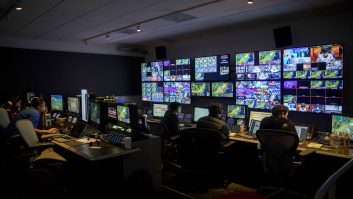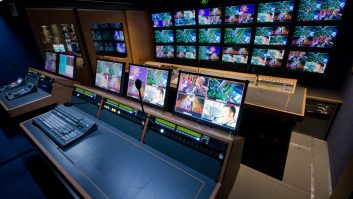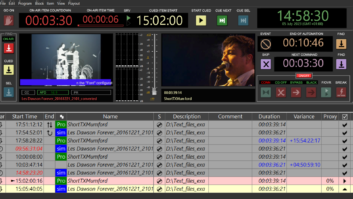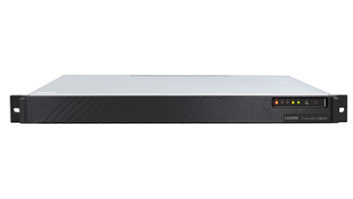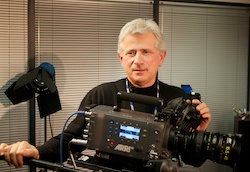
This week’s Beyond HD Masters conference showcased the great potential for 4K and other technologies offering higher resolutions, higher frame rates, and other improvements. But, it also addressed some of the possible problems, not least how to deal with all the extra data.
This is certainly one of the areas which was discussed in the “4K recorded programming: Technical and creative issues” session, where Arri’s director of Business Development, Milan Krsljanin, was one of the panellists.
Arri has been involved with 4K digital intermediate production for a long time, mainly for feature films, with its range of scanners and lasers, as well as its colour management system.
Users wanted to use 4K to preserve the colourimetry and resolution of film, but three issues emerged: “Too much data, too much time and too much money,” explained Krsljanin. “The amount of data will be high, the time required to process that will be higher than we are used to dealing with now, and someone will have to pay for it.”
However, movie producers couldn’t charge extra for 4K digital cinema compared to 2K. “The public wouldn’t see the difference,” he insisted. “The perceptual difference between HD and SD is much greater than 4K to 2K.” Not much can be done to improve cinema screens physically, and where people sit in the auditorium has a large effect on whether they can see any difference between 2K and 4K. Also, with more pixels, and possibly more frames, you need more powerful projectors to attain the same perceived brightness, adding further cost. The resulting picture may be more realistic looking, but from a creative point of view, this may not be so desirable. With 24fps film you get a dreamlike quality, offering the maximum impact for the lowest number of frames (or data).
So far, moviemakers have had a better return from 3D, as audiences have been relatively happy to pay more for it, and 3D is only 2x the data of 2K whereas 4K is 4x the data. Using 4K for DI also makes things especially difficult when there are last-minute changes, as there almost invariably are, and everything has to be re-rendered – “the extra time it takes can be a real killer.”
For example, the recent Tom Cruise sci-fi movie, Oblivion, was shot at 4K and was intended to DI at 4K, but they soon realised it would be too much data and instead finished it at 2K.
Creatively, some of those shooting with 4K have found it to be “too sharp”, and wanted filters “to make the super sharp images more pleasing,” he said.
“I don’t want to sound negative, but these are the kinds of concerns people have. More pixels doesn’t mean better pictures, just bigger pictures or more sharpness, but a better picture means more dynamic range, wider colour gamut, appropriate image texture. The look and feel of the image.”
The Arri Alexa has a sensor with 3.5K pixels horizontally, but other cameras offer more, however, he pointed out that the majority of digitally originated movies are shot on the Alexa; as are almost all the major TV dramas shot in the UK, because DoPs, producers and colourists “aspire to have the kind of image quality that transcends the normal TV experience.”
On display
One of the problems Krsljanin sees for 4K is the lack of good displays. “At NAB there were 4K displays everywhere, but usually showing lacklustre looking pictures, with no dynamic range.” This is why Arri exhibited an extended dynamic range display from Dolby at Beyond HD Masters. Whereas the standard for a CRT is 110 nits, this will deliver 660 nits (depending on the ambient light).
“If you have a good quality image, and show it with full brightness and properly graded, it stands out,” he said.
A lot can also be done with a raw, uncompressed and un-encrypted image. Skyfall, which was shot on the Alexa, was shown on IMAX at 4K, and what impressed him most was “the amount of light coming from the screen.”
One of the arguments for 4K is that it is future proof, but he feels it is just as important to retain the full, uncompressed raw data. “You will be in a position where, if new debayering algorithms emerge in four or six years, you will get more from that raw image.”
The main reason that Skyfall could be up-rezed so effectively from 2K to 4K was that “they shot it with amazing lenses and kept the Arriraw through the entire production process,” he said.
Genre specific
Krsljanin feels that any drive to adopt 4K will depend a lot on the type of programming involved. The obvious contenders for TV are sport and high-end drama, as they are the areas with sufficient budget to cope with the extra cost.
For sport to go 4K, “you really need cameras with small sensors [2/3-inch], because a shallow depth of field [as you get with a digital cinema camera] runs counter to the needs of sports coverage, where you want as much in focus as possible. Shallow depth of field may produce pleasing pictures, but not the right images for the genre.” Cameras should also be the same size and shape as current OB cameras, but with 4K and 6GHz HD-SDI outputs. Live production also needs routers and switchers that can cope with 6G, although most monitors can be HD with just the master output monitor at Ultra HD.
The biggest problem he sees will be with slow motion, particularly if UHD were to adopt a higher standard frame rate (such as the proposal for 120fps). There is also a need for the same type of long-range lenses (90 or 100x zoom) as currently used for HD, but at a much higher quality. “If you put an HD lens on a 4K camera, you are not going to get the sharpness.”
For drama, he sees no problem with 4K cameras or lenses, as these are already in use, but with the rest of the chain, such as support from Avid for 4K.
By David Fox
